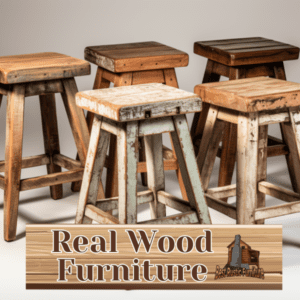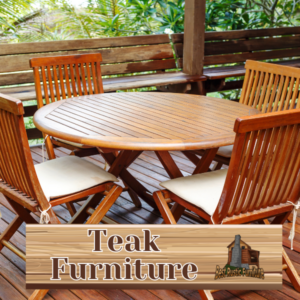
If you’re aiming for a rustic look for your decor, a distressed finish on furniture is the perfect way to achieve it. It adds charm and character to any piece and can transform your space into a cozy, welcoming haven. But how can you achieve the perfect distressed finish? Let’s dive into the steps and techniques to get the weathered look you’re after.
Key Takeaways:
- Distressed finishes add charm and character to furniture, making it ideal for a rustic space.
- With the right techniques and tools, you can easily achieve the perfect distressed finish on your furniture.
- Proper preparation and protective measures are key to ensuring your distressed finish lasts for years to come.
- Adding finishing touches such as new knobs or decorative elements can elevate the charming look of your piece.
- Don’t be afraid to experiment with paint finishes to add a modern twist to your rustic space.
Understanding Distressed Finishes
Distressing is the process of intentionally creating a weathered look on a piece of furniture to give it character and charm. A distressed finish can create a vintage, rustic, or shabby-chic vibe, depending on the techniques used.
The distressed finish can be achieved through several methods, including sanding, painting, staining, or glazing. Each technique has its unique characteristics and can create a different effect. A distressed finish gives the piece a patina which adds depth and dimension to the wood.
If you want to create a distressed wood finish, consider what level of distress you want. The level of distress refers to how much wear and tear the piece will have, such as dents, scratches, or peeling paint.
Distressing Techniques
Sanding is one of the most common and easy ways to create a distressed look. To achieve this finish, you should begin with a piece of bare wood. Then, sand the surface with lower grit sandpaper until the desired level of wear is achieved.
The painting technique involves using two different paint colors and layering them onto the piece. Once the first coat of paint has dried, apply the second coat in a different color. When the second coat is dry, sand some areas until the first coat peeks through. Layering paint creates a worn look to the piece.
Staining helps to create a weathered look by highlighting the natural wood grain. After applying the stain to the piece, sand it down in areas to expose some of the bare wood.
Whitewashing is a technique where you paint a white layer over the piece and then wipe it away with a clean rag, leaving some parts exposed. It gives a worn and vintage look to the furniture.
Glazing involves smudging a coat of glaze over the painted or stained piece. The glaze will settle into the cracks and crevices of the piece, resulting in a more rustic look.
Experiment with different techniques to find the right one for your piece. Each technique will create a unique look and feel for your piece.
Preparing the Surface
Before you begin distressing your furniture, it’s crucial to properly prepare the surface. Follow these steps to ensure a successful result:
- Sand: Use sandpaper to smooth out any rough spots or imperfections on the piece. Start with a lower grit sandpaper and work your way up to a higher grit for a smooth surface.
- Clean: Wipe down the surface with a clean rag to remove any dust or debris left over from sanding.
- Prime: Apply a primer if your piece is bare wood or previously painted with a glossy finish. The primer helps the distressed finish adhere to the surface better.
After the surface is fully prepped, you’re ready to move on to the distressing techniques.
Painting Techniques for Distressing
Choosing the right paint and application technique is crucial for achieving the perfect distressed look. Chalk paint and latex paint are popular choices for achieving the desired effect. When applying the first coat of paint, it’s best to use a paintbrush to apply even strokes in the direction of the wood grain. Let the first coat dry completely before adding a second coat.
Layering paint colors is another technique used to achieve a distressed look. After the base coat has dried, apply a second, contrasting coat of paint. Once the second coat of paint has dried, use sandpaper to distress it. Distressing can be achieved by sanding down specific areas, such as corners and edges, to reveal the base coat of paint.
Distressing techniques like sanding and rubbing can also be used to create a worn and weathered appearance. Use a lower grit sandpaper and sand along the edges and corners of the piece to create the desired effect. Rubbing the paint with a clean rag can also help create a distressed look.
Remember to choose a paint color that complements your rustic space’s overall aesthetic. Whether you prefer neutral colors or bold hues, the color you choose will impact the final result. Experiment with different painting techniques and distressing methods to achieve your desired effect.
Staining and Whitewashing
If you’re looking to achieve an antique or weathered look, staining or whitewashing may be the way to go. These techniques can give your furniture a unique character and charm. Here are the steps to achieve the perfect stained or whitewashed finish:
- Prepare the surface: As with any distressed finish, it’s important to properly prepare the surface. Sand the piece and clean it with a tack cloth to remove any dust or debris.
- Apply stain or whitewash: Apply the stain or whitewash with a paintbrush or rag, depending on the desired effect. For an antique look, use a darker stain. For a more weathered appearance, use a white or gray wash. Let dry completely.
- Sand: Once the stain or whitewash has dried, use sandpaper to distress the piece. Focus on areas that would naturally experience wear and tear, such as edges and corners. Be sure to sand lightly to avoid removing too much of the finish.
- Add glaze: For a more polished look, add glaze to the piece after sanding. Apply the glaze with a paintbrush or rag and let it dry completely.
Staining or whitewashing your furniture is a great way to achieve an antique or weathered look. Just be sure to properly prepare the surface and use sandpaper and glaze to create the desired effect. Happy distressing!
Waxing and Varnishing
Once you have achieved your desired distressed look, it is important to protect it with the right finish. The most popular options are wax, polyurethane, or varnish.
Wax
Furniture wax is a great option to seal and protect your distressed finish. It is easy to apply with a soft cloth or brush and comes in both clear and tinted options. When using wax, apply a thin coat and let it dry completely before buffing with steel wool for a smooth finish.
Polyurethane
Polyurethane is a durable and long-lasting option for sealing your furniture. It is suitable for high traffic areas and comes in both oil-based and water-based options. When applying polyurethane, use a brush or roller to apply a thin and even coat, and let it dry for the recommended time before applying a second coat if necessary.
Varnish
Varnish is an excellent option for protecting your piece from wear and tear. It is available in both matte and gloss finishes, and can be applied with a brush, roller, or spray gun. When using varnish, make sure to apply thin coats and let them dry completely before applying additional coats.
No matter which finish you choose, make sure to follow the manufacturer’s instructions for application and drying time.
Maintenance
To maintain the longevity of your distressed finish, avoid using harsh chemicals or abrasive cleaners. Instead, use a soft cloth or mild soap and water to clean your piece. If you notice any scratches or dings, touch up the affected area with paint or stain and protect it with the appropriate finish.
With the right finish and proper maintenance, your distressed furniture can last for many years to come.
Adding Finishing Touches
Now that you have achieved the perfect distressed finish, it’s time to add some finishing touches to complete the look. Swapping out the knobs or drawer pulls is one easy way to add a unique touch to your furniture. Look for salvage or vintage pieces to enhance the rustic feel of the piece.
If you’re feeling creative, you can also add decorative elements to your furniture. Consider stenciling a design or adding a decal to the surface. This will add a personal touch to your piece and make it truly one-of-a-kind.
Another option is to enhance the patina of the piece. Collectibles, such as old books or vases, can be placed on the surface to create a lived-in feel. Additionally, you can add a glaze or use steel wool to create a more weathered appearance.
| Tip: | When selecting finishing touches, be careful not to overdo it. The beauty of a distressed finish is its simplicity, so aim to keep it subtle and natural-looking. |
|---|
By following these tips, you can elevate your distressed furniture to the next level. Don’t be afraid to experiment and try something new.
Remember, the final result should reflect your personal style and taste.
Troubleshooting and Tips
If you’re a DIYer attempting a distressed finish for the first time, there are some potential problems you may encounter. Here are some easy solutions to help you avoid frustration:
- Problem: The paint is peeling off in chunks. Solution: Sand the piece down and start over with a lower grit sandpaper before applying paint.
- Problem: The paint won’t adhere to the surface. Solution: Clean the surface thoroughly with a tack cloth to remove any debris, and apply a primer before painting.
- Problem: The piece looks too new or perfect. Solution: Use a lower grit sandpaper to rough up the surface before applying paint or stain, and consider using a glaze to add age and character.
It’s also essential to use the right materials and tools to achieve the desired results. Lower grit sandpaper and tack cloth are easy to find at home improvement stores or online. Remember to wear protective equipment such as gloves and a mask when working with materials like paint or stain. By following these tips and being prepared for potential problems, you’ll be well on your way to achieving a beautiful distressed finish on your furniture.
Reader Interactions and Feedback
At [publication], we value our readers and their feedback. We appreciate all the comments and questions we receive on our articles, and we strive to provide helpful and informative responses. Thanks for sharing your thoughts and experiences with us!
“This article was just what I needed! I’m planning to distress an old dresser for my daughter’s room, and I had no idea where to start. Your instructions were clear and easy to follow. Thanks!” – Angela
We’re so glad to hear that our article was helpful for you, Angela! Distressing furniture can seem daunting at first, but with the right guidance, it’s easy to achieve a beautiful, weathered look. Let us know if you have any other questions or if there’s anything else we can help you with.
We encourage all our readers to share their experiences and tips for distressing furniture. Have you tried any of the techniques we discussed in this article? Do you have any other tips to share? Let us know in the comments below!
Conclusion
In conclusion, achieving a distressed look for your rustic space is easier than you might think. With the right preparation, tools, and techniques, you can transform your furniture and create a beautiful, weathered look. Whether you choose to use painting, staining, or whitewashing techniques, the distressed finish can add character and charm to your decor. Experiment with different paint finishes and consider adding modern touches like sleek hardware or bold colors for a unique twist. The possibilities are endless, and the end result will be a personalized space that reflects your style. And as a special freebie, we can’t wait for you to try our easy distressed finish guide. With just a few simple steps, you can achieve a beautiful, worn look that will complement any rustic or vintage decor. So don’t wait, get started today and see how easy achieving a distressed finish can be.
FAQ
What is a distressed finish?
A distressed finish is a technique used to create a weathered and worn look on furniture or other surfaces. It involves intentionally distressing the surface to give it an aged and rustic appearance.
What effect can a distressed finish achieve?
A distressed finish can add character and charm to your furniture, giving it a unique and vintage look. It can also help create a cozy and inviting atmosphere in your rustic space.
How do I prepare the surface for a distressed finish?
Properly preparing the surface is essential for a successful distressed finish. This includes sanding the piece, cleaning it with a rag, and applying a primer if needed. These steps ensure that the distressed look adheres well to the surface and lasts longer.
What painting techniques can I use for distressing?
There are various painting techniques you can use for distressing, including using chalk paint, latex paint, and layering paint colors. Sanding and rubbing can also be used to create a worn appearance.
How do I stain or whitewash my furniture for a distressed look?
To stain or whitewash your furniture, you’ll need to apply the stain or whitewash, sand the surface, and add glaze if desired. These techniques can give your furniture an antique and weathered charm.
How do I protect the distressed finish?
Once you’ve achieved the desired distressed look, it’s important to protect the finish. This can be done by applying wax, polyurethane, or varnish to seal and protect your piece. Regular maintenance will also help ensure the longevity of your distressed finish.
What are some finishing touches I can add to my distressed furniture?
You can enhance the rustic charm of your distressed furniture by changing knobs or drawer pulls, adding salvaged or decorative elements, and enhancing the overall patina. These small details can elevate the appeal of your piece.
What are some common issues with distressing furniture?
Common issues with distressing furniture include uneven or blotchy finish, paint peeling or flaking off, or excessive sanding. In our troubleshooting section, we address these issues and provide helpful tips to overcome them.
Can I achieve a distressed finish without a lot of DIY experience?
Absolutely! Our guide provides step-by-step instructions and tips that are easy to follow, even for beginners. You don’t need extensive DIY experience to achieve a beautiful distressed look.
How can I share my feedback or ask questions?
We love hearing from our readers! You can share your feedback, ask questions, or provide any helpful suggestions by leaving a comment or reaching out to us via email. We appreciate your engagement!






